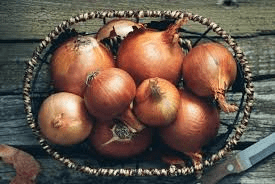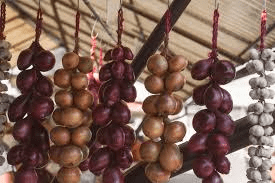Onions are one of the most versatile and widely used ingredients in cooking. They add flavor, texture, and aroma to many dishes, from soups and salads to curries and casseroles. However, onions can also be tricky to store properly, as they can spoil quickly, sprout, or lose their freshness if not handled correctly.
In this article, we will explain the importance of proper onion storage, the steps involved in storing onions, and some tips and tricks for extending the shelf life of onions. By following these guidelines, you can enjoy fresh and tasty onions for longer and reduce food waste.
Choosing the Right Onions

The first step in storing onions is choosing the right ones for storage. Not all onions are suitable for long-term storage, as some varieties are more prone to rotting, sprouting, or losing their flavor. Here are some factors to consider when choosing onions for storage:
1. Firmness: The onions should be firm and dry, with no signs of softness, moisture, or mold. Soft or wet onions are likely to spoil faster and attract pests.
2. Skin: The onions should have a smooth and intact skin, with no bruises, cuts, or blemishes. Damaged skin can expose the onion flesh to bacteria and fungi, which can cause rotting or decay.
3. Type: The type of onion also affects its storage potential. Generally, onions with a stronger flavor and a higher sulfur content, such as yellow, red, or white onions, are more suitable for storage than onions with a milder flavor and a lower sulfur content, such as green onions, scallions, or shallots. The latter are best used within a few days of purchase, as they tend to wilt and lose their crispness.
Read Also: How to Use Tilapia Fishes to Feed Catfishes for Profits
Preparing the Onions for Storage

Once you have chosen the right onions for storage, you need to prepare them properly to ensure their longevity and quality. Here are some steps to follow when preparing onions for storage:
1. Remove any dirt or debris: Before storing onions, you should remove any dirt or debris that may be attached to them, as these can harbor bacteria and fungi that can cause spoilage. You can use a soft brush or a cloth to gently wipe off any dirt or dust from the onion skin. Do not wash the onions, as this can introduce moisture and increase the risk of rotting.
2. Let the onions dry: After removing any dirt or debris, you should let the onions dry in a well-ventilated area for a few hours or overnight. This will help to remove any excess moisture and prevent mold growth. You can spread the onions on a tray, a rack, or a newspaper, and keep them away from direct sunlight and heat sources.
3. Trim the roots and stems: If the onions have long roots or stems, you can trim them to about an inch long, as this will reduce the chances of sprouting and make the onions easier to store. However, do not cut or peel the onion skin, as this will expose the onion flesh and reduce its shelf life.
Storage Tips

After preparing the onions for storage, you need to store them in a suitable place and container that will preserve their freshness and flavor. Here are some tips for storing onions:
1. Store onions in a cool, dry, well-ventilated area: The ideal temperature for storing onions is between 10°C and 15°C (50°F and 60°F), and the ideal humidity is between 65% and 70%. These conditions will prevent the onions from sprouting, rotting, or losing their flavor. You should avoid storing onions in a warm, humid, or poorly ventilated area, such as near a stove, a radiator, or a window, as these can accelerate the aging process and cause spoilage.
2. Store onions in a dark place: Onions are sensitive to light, and exposure to light can trigger sprouting, discoloration, or bitterness. Therefore, you should store onions in a dark place, such as a cupboard, a pantry, a drawer, or a closet. You can also cover the onions with a cloth or a paper bag to block out any light.
3. Store onions in a mesh bag or a cardboard box: The best containers for storing onions are those that allow air circulation and prevent moisture buildup, such as mesh bags, net bags, or cardboard boxes. These containers will keep the onions dry and prevent mold growth. You should avoid storing onions in plastic bags, as these can trap moisture and suffocate the onions, leading to rotting or sprouting. You should also avoid storing onions in glass jars, as these can expose the onions to light and heat.
Read Also: 10 Medicinal Health Benefits of Podocarpus henkelii (Henkel’s Yellowwood)
Extending the Shelf Life of Onions
If stored properly, onions can last for several months, depending on the type and quality of the onion. However, there are some ways to extend the shelf life of onions even further, such as:
1. Separate onions by type and use: Different types of onions have different storage potentials, and you should use them accordingly. For example, green onions, scallions, or shallots should be used within a week of purchase, as they tend to wilt and lose their flavor quickly. Yellow, red, or white onions can last for several weeks or months, depending on the variety and the storage conditions. You should also separate onions by their intended use, such as cooking, pickling, or eating raw, as this will help you plan your meals and avoid wasting onions.
2. Use or discard any damaged onions: If you notice any signs of damage, such as softness, mold, rot, or sprouts, on any of the onions, you should use or discard them as soon as possible, as they can affect the quality and safety of the other onions. You can cut off any affected parts and use the rest of the onion, or compost or throw away the whole onion, depending on the severity of the damage. You should also check the onions regularly and remove any that are starting to spoil.
3. Use onions once they start to sprout or go soft: If the onions start to sprout or go soft, they are still edible, but they may have a reduced flavor and texture. You can use them in recipes that require cooking, such as soups, stews, or sauces, as this will mask any changes in taste or texture. You can also use them to make onion sprouts, which are a nutritious and tasty addition to salads, sandwiches, or stir-fries.
To make onion sprouts, you can place the sprouted onions in a jar with some water, and change the water every day. The sprouts will grow in a few days and you can harvest them when they are about an inch long.
In conclusion, Onions are a staple ingredient in many cuisines, and they can enhance the flavor and aroma of many dishes. However, onions can also be challenging to store properly, as they can spoil quickly, sprout, or lose their freshness if not handled correctly.
By following the tips and tricks in this article, you can store onions properly and extend their shelf life. This way, you can enjoy fresh and tasty onions for longer and reduce food waste. Try out these tips and tricks and see the difference for yourself.
Read Also: What You Need to Know About Osteospermum
